
Heart Anatomy BIO103 Human Biology
The circulatory system works thanks to constant pressure from the heart and valves throughout the body. This pressure ensures that veins carry blood to the heart and arteries transport it away.
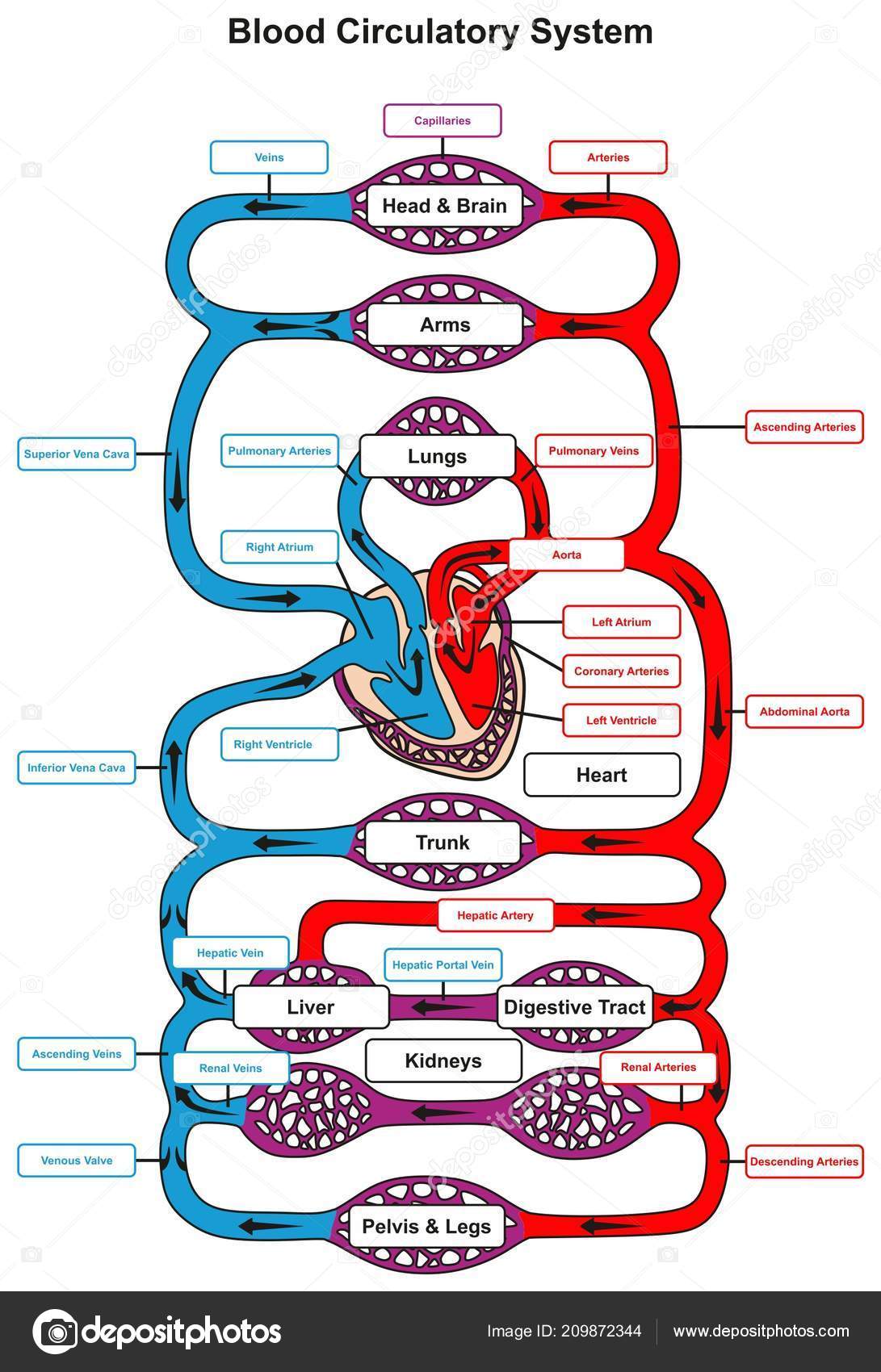
Blood Circulatory System Human Body Infographic Diagram Heart Pumping All ⬇ Vector Image by
Download scientific diagram | Schematic diagram of the blood circulatory system. There are three major types of blood vessels: arteries, veins and capillaries. Capillaries are consisted of a layer.

3 A schematic overview of the cardiovascular system with the heart as... Download Scientific
systemic circulation: The part of blood circulation that carries oxygenated blood away from the heart, to the body,. Alveoli: A diagram of the alveoli, showing the capillary beds where gas exchange with the blood occurs. Pulmonary circuit: Diagram of pulmonary circulation. Oxygen-rich blood is shown in red; oxygen-depleted blood in blue.
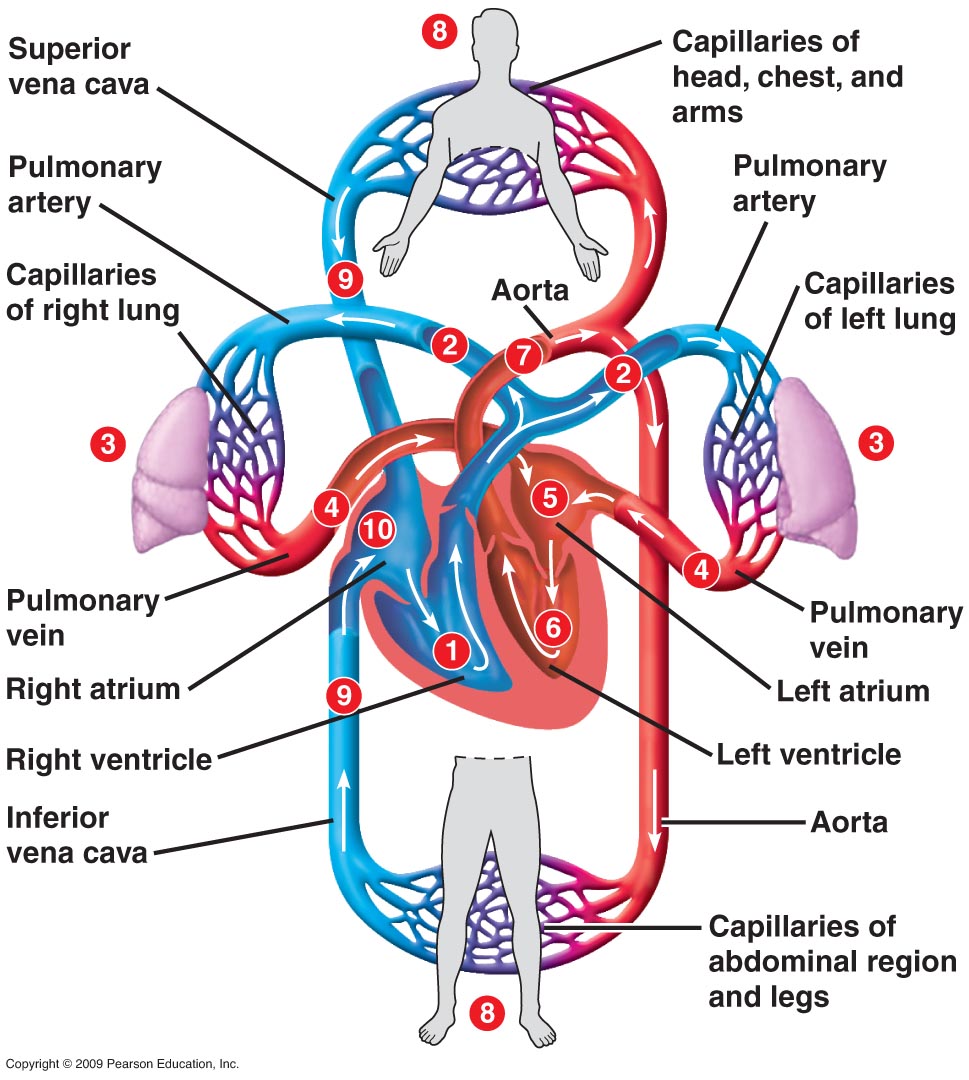
Study While Having Fun... 8th Worksheet Double circulation labellings
In double circulation, there are two pathways in which blood flows. They are: 1) Pulmonary pathway 2) Systemic pathway. The pulmonary circulation or pathway carries the deoxygenated blood from the right side of the heart to the lungs. Exchange of oxygen and carbon dioxide takes place in the lungs and the blood is now oxygenated (with oxygen).
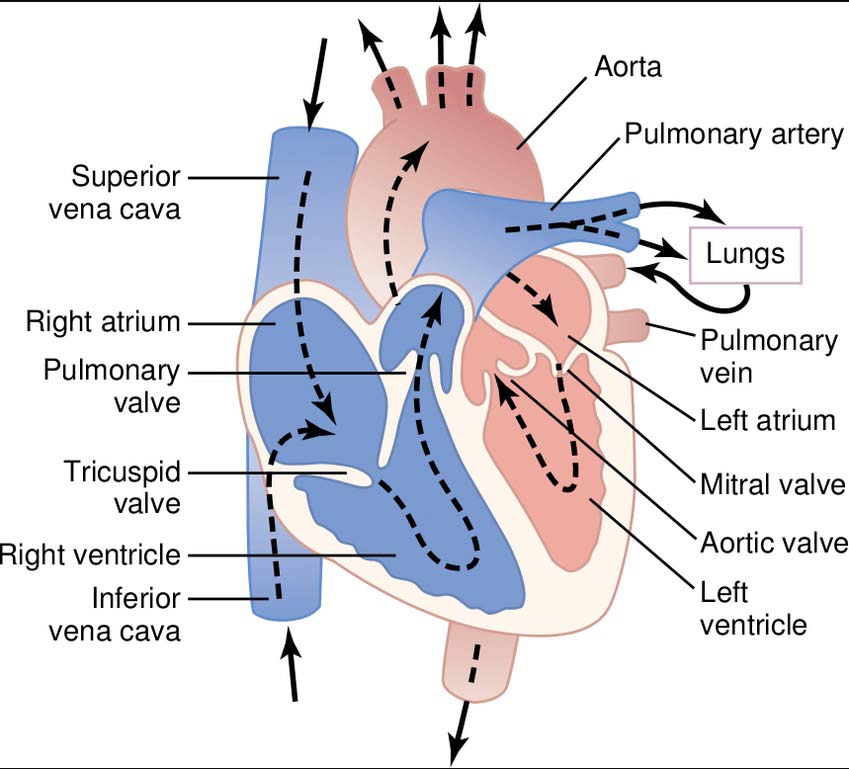
The Blood Circulation in Heart Ishwaranand
The human circulatory system consists of several circuits: The pulmonary circuit provides blood flow between the heart and lungs. The systemic circuit allows blood to flow to and from the rest of the body. The coronary circuit strictly provides blood to the heart (not pictured in the figure below). Image credit: Blood flow from the heart by.

1. Systemic circulation pressures Pulmonary Function I (Outline)
Part 3 (Blood Platelet) — Blood platelets are the initiators of blood clotting. (d) The average life span of a red blood cell (RBC) is about 120 days. (e) Fibrinogen. Question 2. Given below is a highly schematic diagram of the human blood circulatory system.
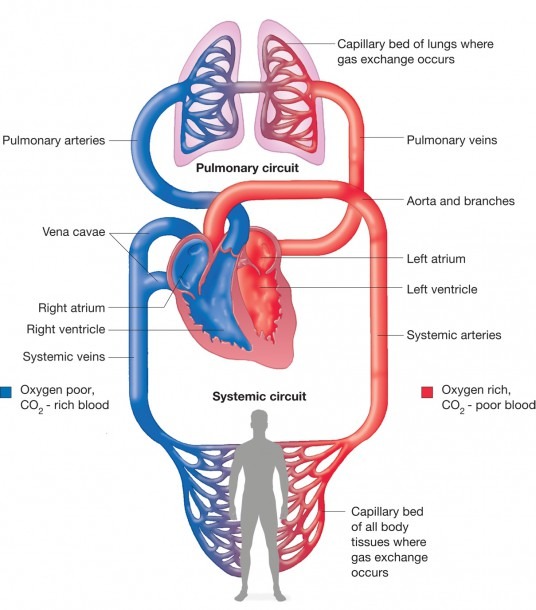
Schematic Diagram Of Blood Circulation In Human Body
Diagram of the Human Circulatory System (Infographic) Infographics. By Ross Toro. published 29 August 2013. Find out all about the blood, lungs and blood vessels that make up the circulatory system.

medicine anatomy blood circulation schematic diagram drawing 20th Stock Photo 60141648 Alamy
Figure 1 - Schematic diagram of the brain blood circulation: 1, Aortic Arch; 2, brachiocephalic artery; 3, common carotid artery; 4, posterior inferior cerebellar.

Diagram blood circulation labeled Anatomy System Human Body Anatomy diagram and chart images
Step 1 and 6 involve a blood vessel, which makes sense as this is how blood enters and exits that side of the heart. Steps 2-5 involve a chamber, valve, chamber, and valve. So if you remember this general pattern, it will help you recall the order in which blood flows through each side of the heart.
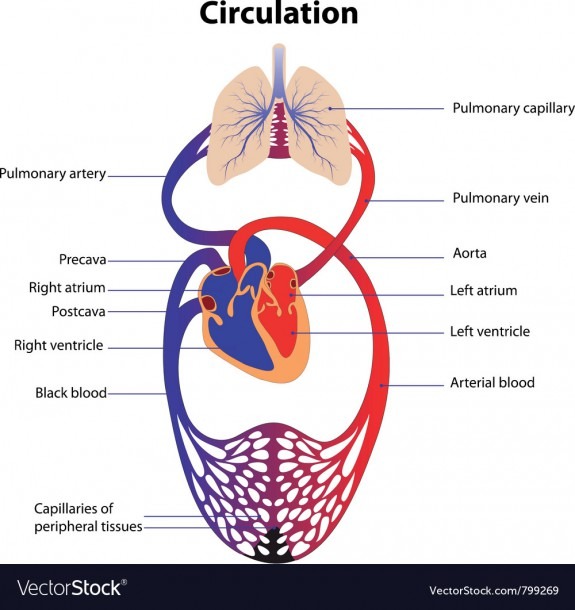
Schematic Diagram Of Blood Circulation In Human Body
This lesson includes the main parts of the heart anatomy and a diagram of the heart and blood flow. Updated: 11/21/2023 Table of Contents. Blood Flow. As we mentioned, blood follows a one-way.

How Chiropractic Care Has Been Shown to Improve Blood Circulation
Blood Circulatory System: Types, Diagram, Working, Open vs Closed Circulation, Structure and Functions. Circulatory Systems are bodily systems used to transport nutrients, blood, gases, wastes and other materials of the body to and fro from one part to another part. Circulatory systems are present in the simplest organisms like sea sponges.

1 A schematic diagram of the blood circulation system in the human body... Download Scientific
Blood then enters the left ventricle to be circulated again. Pulmonary circuit: Diagram of pulmonary circulation. Oxygen-rich blood is shown in red; oxygen-depleted blood in blue. Distribution of blood can be modulated by many factors, including increasing or decreasing heart rate and dilation or constriction of blood vessels.
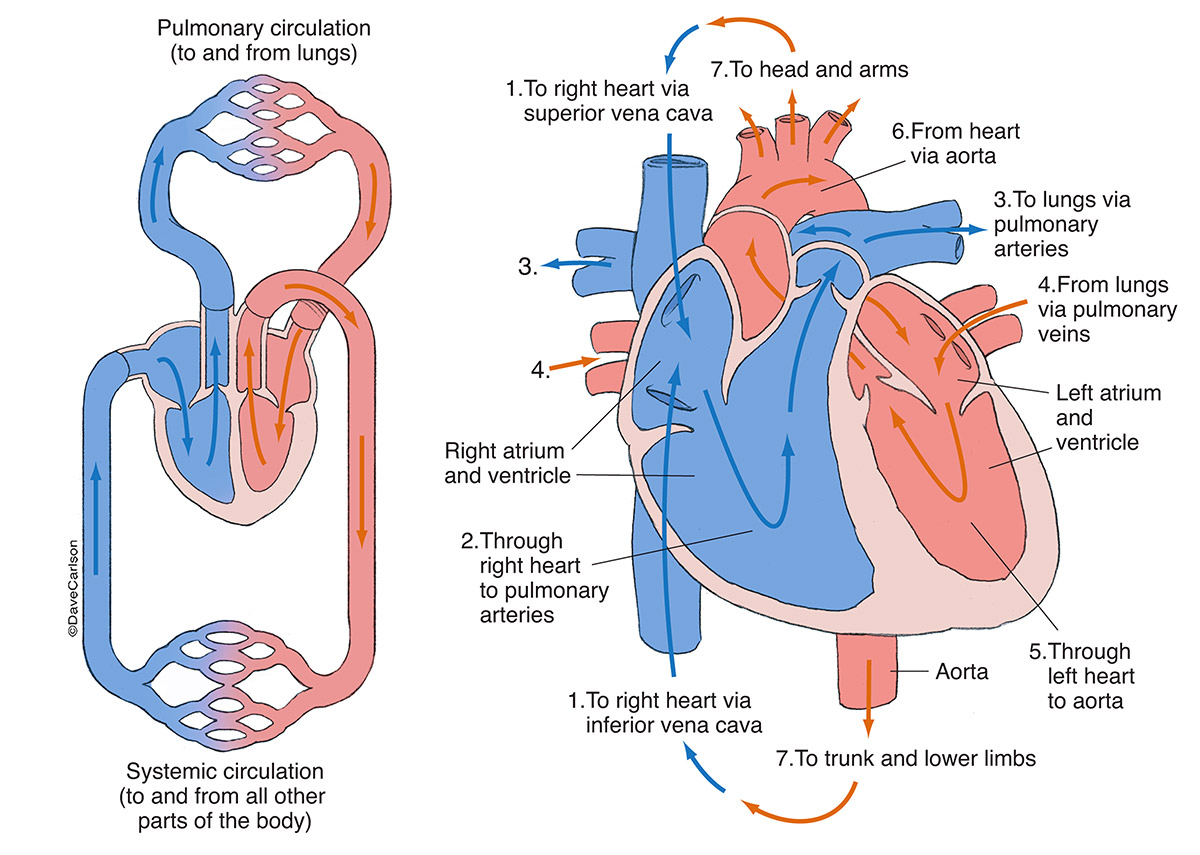
Cardiovascular Networks Generalized Carlson Stock Art
Blood enters the heart through two large veins, the inferior and superior vena cava, emptying oxygen-poor blood from the body into the right atrium of the heart. As the atrium contracts, blood flows from your right atrium into your right ventricle through the open tricuspid valve. When the ventricle is full, the tricuspid valve shuts.

Circulation Flow Chart
No blood flows through the pulmonary artery. Some of the pulmonary capillaries will be stagnant or collapsed without normal pulsatile pulmonary blood flow. (C) Schematic diagram of pulmonary.

Double Circulation Blood Circulation in Humans BYJU'S
Process of blood circulation: Deoxygenated blood from the body cells are carried by the veins to the heart. The right auricle receives the blood and pumps it (through the tricuspid valves) into the right ventricle. From here, pulmonary artery transports it to the lungs where it gets oxygenated. From the lungs the oxygenated blood is carried by.

Blood Flow Diagrams 101 Diagrams
The cusps are pushed open to allow blood flow in one direction, and then closed to seal the orifices and prevent the backflow of blood. Backward prolapse of the cusps is prevented by the chordae tendineae-also known as the heart strings-fibrous cords that connect the papillary muscles of the ventricular wall to the atrioventricular valves.. There are two sets of valves: atrioventricular.